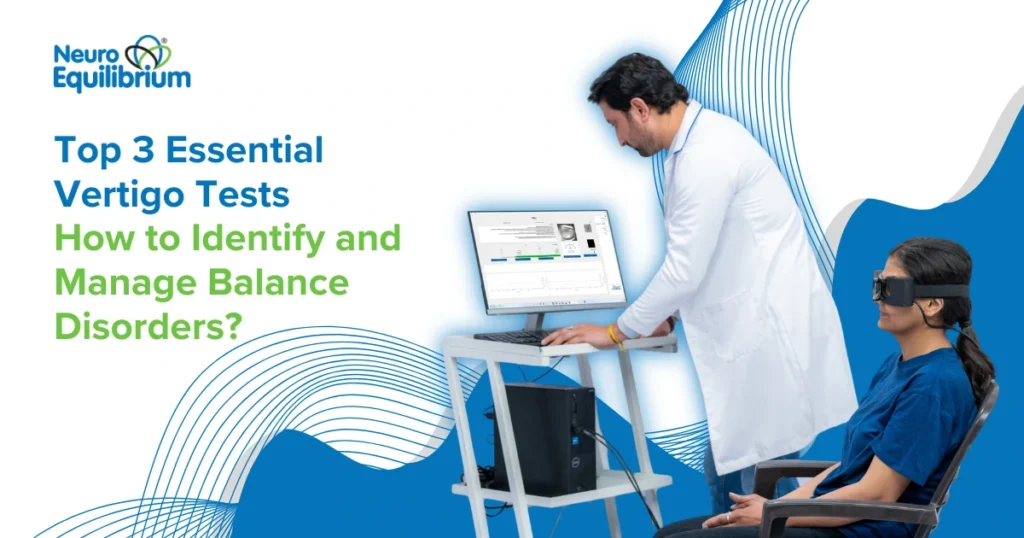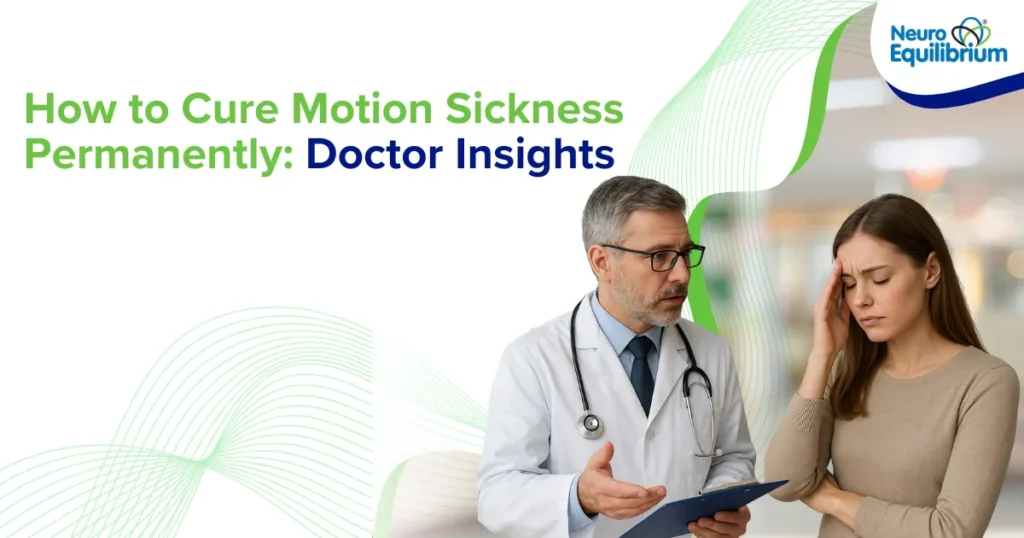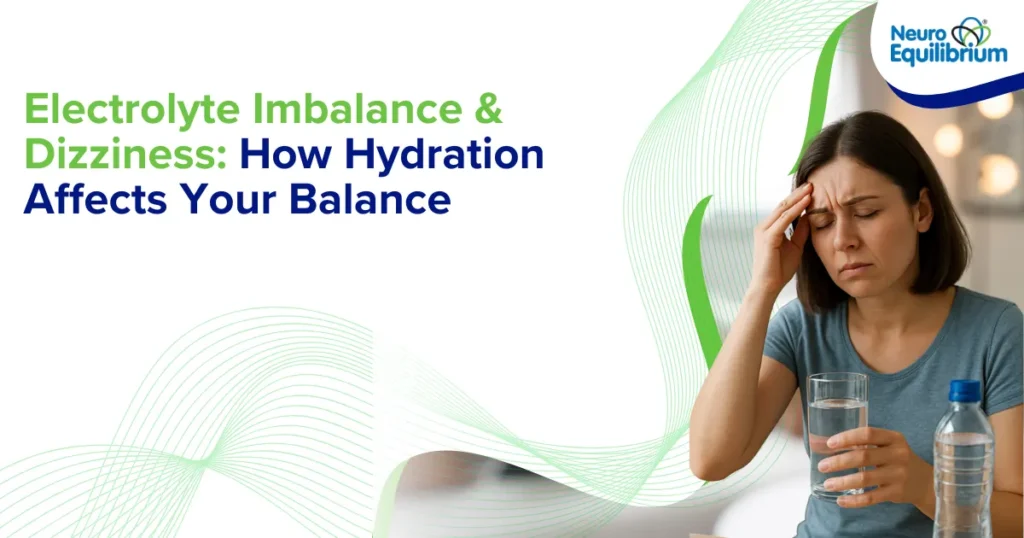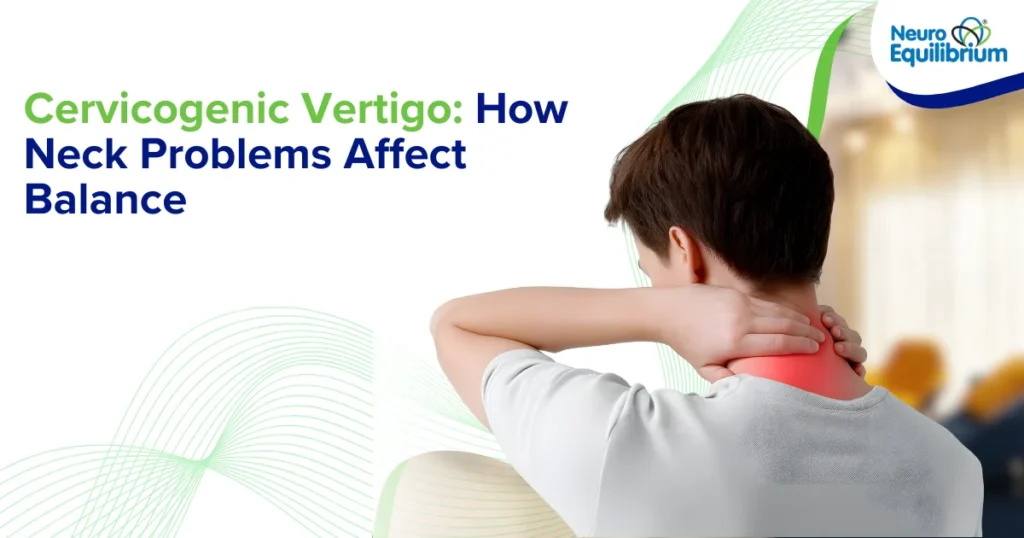Vertigo is a sensation of spinning or dizziness, often caused by issues within the inner ear or central nervous system. Balance disorders encompass a range of conditions that affect an individual’s ability to maintain equilibrium, leading to instability and falls. Understanding these disorders is crucial, as they can significantly impact daily life.
Conducting appropriate vertigo tests is essential for accurate diagnosis and effective management of these conditions. These tests help healthcare professionals identify the underlying causes of vertigo, enabling tailored treatment plans.
Getting tested not only aids in proper diagnosis but also opens the door to effective treatments and relief. Early intervention can enhance the quality of one’s life, minimize risks associated with falls, and improve overall well-being.
Know More About Balance Disorders:
- Balance Awareness Week 2024: Understanding and Identifying Balance Disorders
- Balance Rehabilitation: Exercises and Therapy Techniques
Common Symptoms That Indicate the Need for Vertigo Tests
Identifying balance disorders often begins with recognizing specific symptoms. Common indicators include dizziness, imbalance, spinning sensations, and nausea. These symptoms can vary in intensity and duration, affecting daily activities and overall quality of life. Dizziness is frequently the first sign, causing a disorienting feeling that can lead to difficulty standing or walking. An imbalance may manifest as a tendency to sway or feel unsteady while spinning sensations can make it feel like the surroundings are moving. Nausea often accompanies these symptoms, further complicating the experience.
When these symptoms persist or worsen, they signal the need for professional vertigo tests. Prolonged episodes can indicate underlying conditions that require prompt attention. Early diagnosis is crucial, as it allows for timely management of balance disorders, preventing further complications and improving the chances of effective treatment.


Top 3 Essential Vertigo Tests to Diagnose Balance Disorders
Videonystagmography (VNG)
During this non-invasive procedure, specialised cameras track and record how the eyes respond to various stimuli, helping healthcare providers identify inner ear issues that may contribute to dizziness.
Notably, VNG has gained prominence due to its effectiveness in identifying both peripheral and central vestibular disorders and recording eye movements with precision. This diagnostic tool is particularly beneficial in detecting vestibular dysfunction. By providing highly accurate results, VNG enables clinicians to diagnose vestibular dysfunction effectively, playing a vital role in developing tailored treatment plans for individuals experiencing vertigo.
Dynamic Visual Acuity (DVA)
Dynamic Visual Acuity (DVA) is a crucial non-invasive test used to evaluate how well the eyes maintain clear vision during head movements. This test is especially important in diagnosing vestibular disorders that affect the vestibulo-ocular reflex (VOR), which helps stabilise vision when the head is in motion.
DVA plays a critical role in diagnosing vestibulo-ocular reflex (VOR) dysfunction, a common cause of dizziness and imbalance. By identifying disruptions in the brain’s ability to process motion signals from the inner ear, this test helps clinicians develop effective treatment plans for individuals experiencing dynamic visual impairments, often related to conditions like vestibular neuritis.
At NeuroEquilibrium, we use advanced technology to conduct DVA tests that pinpoint issues such as vestibular neuritis or VOR dysfunction, helping patients regain balance and stability in their daily lives. With our state-of-the-art equipment and expertise, we ensure precise results that lead to tailored treatment plans for managing vertigo and related symptoms.
Subjective Visual Vertical (SVV)
The Subjective Visual Vertical (SVV) test assesses a patient’s perception of verticality, which is crucial for maintaining balance. By asking patients to align a visual reference to what they believe is “vertical,” healthcare providers can detect dysfunctions in the utricle a part of the inner ear responsible for sensing gravity and balance.
SVV is especially useful for identifying otolith dysfunction, which often results in a tilted perception of the world and contributes to dizziness or balance disorders. It is a crucial diagnostic tool for clinicians when evaluating conditions such as Meniere’s disease or vestibular migraine, allowing for targeted treatments.
NeuroEquilibrium leverages the SVV test to accurately diagnose disorders like Meniere’s disease and vestibular migraines, which distort vertical perception and cause dizziness. Our advanced diagnostics help patients regain control over their balance and reduce symptoms of vertigo.
Here is a summary of all the tests discussed.
| Test | Purpose | How it Works |
| Videonystagmography (VNG) | Assesses balance via eye movements. | Specialised cameras track and record eye movements in response to various stimuli to identify vestibular dysfunctions. |
| Dynamic Visual Acuity (DVA) | Evaluates visual clarity during head movement. | Measures how well the eyes maintain clear vision when the head is in motion, assessing vestibular disorders affecting the vestibulo-ocular reflex (VOR). |
| Subjective Visual Vertical (SVV) | Assesses the perception of verticality for balance. | Patients align a visual reference to “vertical,” helping detect utricle dysfunctions linked to balance issues like Meniere’s disease and vestibular migraines. |
Note: These tests should always be performed under expert supervision to ensure accurate results and appropriate interpretation.
Managing Balance Disorders After Vertigo Tests
Once vertigo tests identify the cause of balance disorders, treatment options become clear. One of the most effective treatments is vestibular rehabilitation therapy (VRT), which uses exercises to strengthen the balance system. For some, medications may be prescribed to alleviate symptoms like dizziness or nausea. In cases of benign paroxysmal positional vertigo (BPPV), positional maneuvers like the Epley maneuver can quickly relieve symptoms.
Vertigo tests allow doctors to create a personalised care plan, ensuring patients receive the most appropriate treatment. Early diagnosis is key, and most balance disorders can be treated effectively with timely intervention. This helps patients regain confidence and improve their quality of life.
Conclusion
Vertigo and balance disorders can significantly impact an individual’s quality of life. Early and accurate diagnosis is crucial for effective management.
With the diagnostic tests listed above, healthcare specialists can tailor treatment plans to address specific vestibular dysfunctions, ensuring a more targeted and effective course of action. Moreover, advancements in technology, like those offered by NeuroEquilibrium’s cloud-based diagnostic systems, are making vertigo diagnostics more accessible and precise, improving patient outcomes globally.
By understanding and utilizing these tests, both patients and clinicians can better navigate the complexities of vertigo, ensuring that balance disorders are diagnosed swiftly and managed efficiently.
For anyone experiencing persistent or unexplained vertigo, consulting a healthcare professional is crucial. NeuroEquilibrium specialises in diagnosing and treating balance disorders, employing advanced technology and expert care to provide tailored solutions for those affected by vertigo. By reaching out to NeuroEquilibrium, you can gain a comprehensive understanding of your condition and access effective treatment options to enhance your quality of life.
Contact us now at +91-9266125888 Or book an appointment here.
1. What are the common symptoms of vertigo and balance disorders?
Common symptoms of vertigo and balance disorders include dizziness, a spinning sensation, nausea, and imbalance. Individuals may feel as though their surroundings are moving or experience difficulty standing and walking. The intensity of these symptoms can vary and may disrupt daily activities. Vertigo tests are essential for accurately diagnosing these symptoms, as they can indicate underlying vestibular disorders. If you experience persistent or worsening symptoms, it’s crucial to seek professional evaluation, as early diagnosis and treatment can help improve your quality of life.
Book a consultation at your nearest NeuroEquilibrium Clinic today.
2. How are vertigo and balance disorders diagnosed?
Vertigo and balance disorders are diagnosed through a variety of specialized tests that evaluate the function of your vestibular system and inner ear. Common tests include Videonystagmography (VNG), Dynamic Visual Acuity (DVA), Subjective Visual Vertical (SVV), Video Head Impulse Test (vHIT), Posturography (Balance Test. These tests measure eye movements, muscle reflexes, and responses to rotations, providing healthcare professionals with detailed insights into the causes of vertigo. Accurate diagnosis through these tests is key to developing a tailored treatment plan and improving your balance and overall well-being.
Book a consultation at your nearest NeuroEquilibrium Clinic today.
3. What are the benefits of taking vertigo tests early?
Taking vertigo tests early helps in diagnosing balance disorders before they worsen. Early intervention helps healthcare providers pinpoint the root cause of vertigo, ensuring patients receive timely and proper treatment. This can prevent further complications, such as falls or injuries, and improve a person’s overall quality of life. Additionally, early diagnosis through vertigo tests opens the door to effective therapies like vestibular rehabilitation, which strengthens balance systems and alleviates symptoms. The sooner the issue is identified, the sooner relief and improved balance can be achieved.
Book a consultation at your nearest NeuroEquilibrium Clinic today.
4: What Advantages Does New Equipment Offer?
Upgrading to our brand-new equipment provides numerous advantages for your operations. At Bender Parts, our cutting-edge tube benders, pipe benders, controllers, and laser tube cutters are designed with the latest technology, ensuring unmatched performance and precision. New equipment often incorporates advanced features that enhance efficiency, reduce operational costs, and improve safety. Additionally, purchasing new machinery means you’re investing in longevity and reliability, minimizing the risk of unexpected breakdowns. By choosing our new equipment, you’re equipping your business with the tools needed to meet increasing demands and maintain a competitive edge in your industry.
Book a consultation at your nearest NeuroEquilibrium Clinic today.
5: How Can I Contact Bender Parts for Support?
At Bender Parts, we are dedicated to providing exceptional customer service and support. You can easily contact our team for any inquiries or assistance regarding our products and services. Visit our website to find contact information, including phone numbers and email addresses. Our knowledgeable staff is available to answer your questions, provide product recommendations, or assist with your order. Whether you need guidance on choosing the right equipment or have questions about our offerings, we are here to help you find the best solutions for your industrial machinery needs.
Book a consultation at your nearest NeuroEquilibrium Clinic today.
















